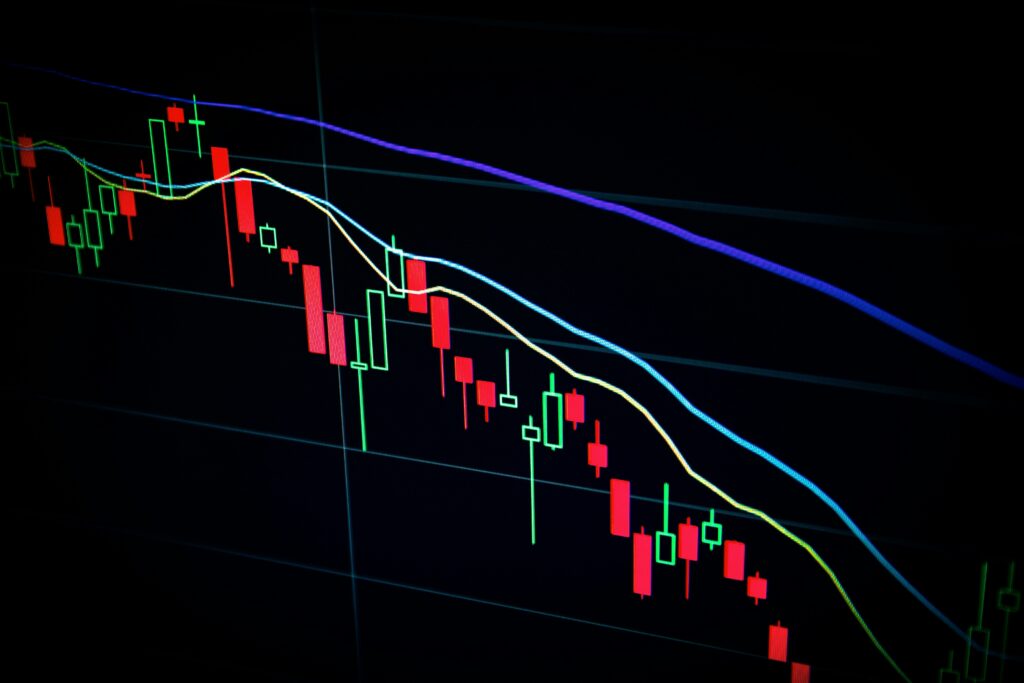Mirador Real Advice Blog
Should I Invest at a New High? The Importance of Momentum in Investing
May 28, 2024
Back in the 1990s, there was a mutual fund company advertisement on television where a person was asking their investment advisor (mutual fund salesperson):
“When is the best time to invest?” – and the answer was – “when you have money.”
There is another old saying:
“Free advice is worth exactly what you pay for it.”
The mutual fund advertisement is a really good example of this saying – it is worthless advice.
Another popular saying is:
“It’s time in the market that counts, not market timing.”
Well, that’s more great free advice too, because if you are a similar age to me (60s), you might not have the time needed to be in the market long enough to let the advice work. Let me explain – if you bought the QQQ Nasdaq 100 ETF at the high of the year 2000, you would not have broken even until late in 2016 – over 16 years later. If I experienced that today I wouldn’t break even until I was almost 80 years old – sheesh! And then it would still be years until my annual return MIGHT be worthwhile.
This brings up an age-old debate regarding the worth of market timing. Typically, market timing is thought of as trying to pick tops and bottoms in markets or individual investments. This is in contrast with the investment industry’s misguided promotion of buy and hold, which really is their way of trying to keep you invested in their fee-generating products, so they always make money.
Some financial “experts” talk about the importance of buying and holding and they use mathematical examples of how your returns suffer if you miss the best days in the markets. Unfortunately, they are not critical thinkers, so they didn’t do a similar analysis of missing the worst days, or even better yet, missing the best and worst days.
I will show these answers in a future blog post, but for now, I can assure you there is value in missing both the best and worst days. i.e. not picking tops and bottoms but avoiding both peaks and troughs. These experts then go on to say that “you can’t time the markets”. Well, I think people should always speak in the first person and they should be saying “I can’t time the markets”.

At Mirador, we can time the markets, and we do. But, this brings us to Mirador’s definition of market timing using a kind of modified sports analogy:
“Market timing is knowing when to be on offence and when to be on defence, or when to sit on the fence”
In other words, at Mirador we don’t try to pick tops and bottoms, but we are good at knowing when it’s time to protect capital versus when it’s time to actively pursue capital expansion. We do this using time-tested technical analysis methods combined with over 30 years of observing the markets with our own capital at stake. Now is the time to be more focused on expanding your capital, while being less concerned about protecting capital. Offence is on the portfolio management field of play, not defence.
So, back to the blog title. Most stock markets have been hitting new highs. Is it too late to be invested or start investing? Absolutely not. The technical analysis leads us to think there is room to go in the positive trend. And, here is a little common sense observation of data that supports this…
As a Bloomberg Professional Terminal subscriber for 15 years, we have access to the greatest investment database in existence. And, the Bloomberg Terminal provides us with advanced tools and capabilities to do our own proprietary research using their data.
Using the Bloomberg Terminal and its API (a data conduit), we have created giant Excel spreadsheets that we use to analyze our benchmark and its components. Let’s look at the benchmark component for the Canadian Stock market – the XIU TSX 60 ETF.
I downloaded from Bloomberg the last 20 years of price data and then created some columns and calculations. In this time frame, there have been 2,735 new daily highs. 51% of the days in the last 20 years were new highs. If one used a new high as a reason to not be invested, you would have hardly ever been invested and would have almost no increase in capital over the last twenty years.

Meanwhile, the total price gain over those 20 years was approximately 200%. So there is more to the decision than new highs. Technically, one needs to examine market breadth, new highs over an assortment of time frames, reversion and trend indicators of various time frames, and fundamental factors involving earnings revisions, earnings surprise, and earnings revisions.
I have attended many Chartered Market Technician conferences in New York. At every conference, I meet other technical analysts and learn about their processes and techniques. One year I met a person who created a successful portfolio trading system that involved buying investments when they hit 52-week highs! That’s not my thing, we are not going to apply this at Mirador. This is just an example how new highs can be used to create successful momentum investing systems.
Buying, or staying invested, at new highs is really considered a type of momentum investing. There are many momentum investing strategies. For clients that have been with me since the 1990s, you will remember a program I called MAP – Momentum Analysis Portfolio. This program was based on a system developed by Dr. Schultz at what was then the business faculty of the University of Western Ontario – now called the Ivey School of Business. His system was written up in an investment journal in the mid-90s in an article titled “Back to the Future”. It was a system of ranking stocks by 4 trailing quarters of percent price change, with the most recent quarter being double-weighted. The returns were phenomenal.
Jim O’Shaughnessy, famed quantitative researcher and fund manager, wrote a book called “What Works on Wall Street”. It’s one of the best books related to Mirador’s combined quantitative and technical analysis approach. According to Jim O’Shaughnessy’s research, momentum investing models have some of the best results.
Cliff Asness is a billionaire cofounder of AQR Capital Management in the U.S. – a firm specializing in quantitative investment programs. Like Jim O’Shaughnessy, Mr. Asness has written research papers and given many speeches and interviews about the importance and value of momentum and trend investing.
Another part of the equation of whether to be invested or not is market psychology. In the old days, we had what’s called the cocktail party indicator. When you attended a cocktail party and everyone was sharing hot tips and willing to talk to anyone in the investment field, you knew the end was near. People were suffering from FOMO – Fear Of Missing Out.

When at a party and nobody talks investing and I am shunned by my mere association, I know that’s the time to get bullish. These days I am experiencing neither, so I am feeling okay about being fully invested and keeping the offence on the field.
So in conclusion, new highs are rarely a reason to move to cash or avoid the markets. There is more to it than that. And most of the time, new highs are a reason to get invested or stay invested because they are an indication of momentum. At this time, most indications lead to the conclusion that there is room to run in the markets, especially in Canada. It is similar to another popular investment adage – “hold your winners and sell your losers” – i.e. keep the ones hitting new highs and be wary of those that are not. And that’s what we are doing now with the Mirador Triopay systems. As far as we can tell, Mirador is the only company using active momentum investing for people wanting income and capital security.
As always, phone me with any questions or comments using the number at the bottom of this blog page.
Stan Clarke
403-608-4664
Investing for Income Believer
